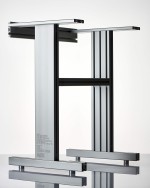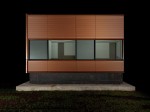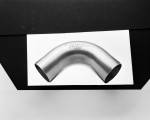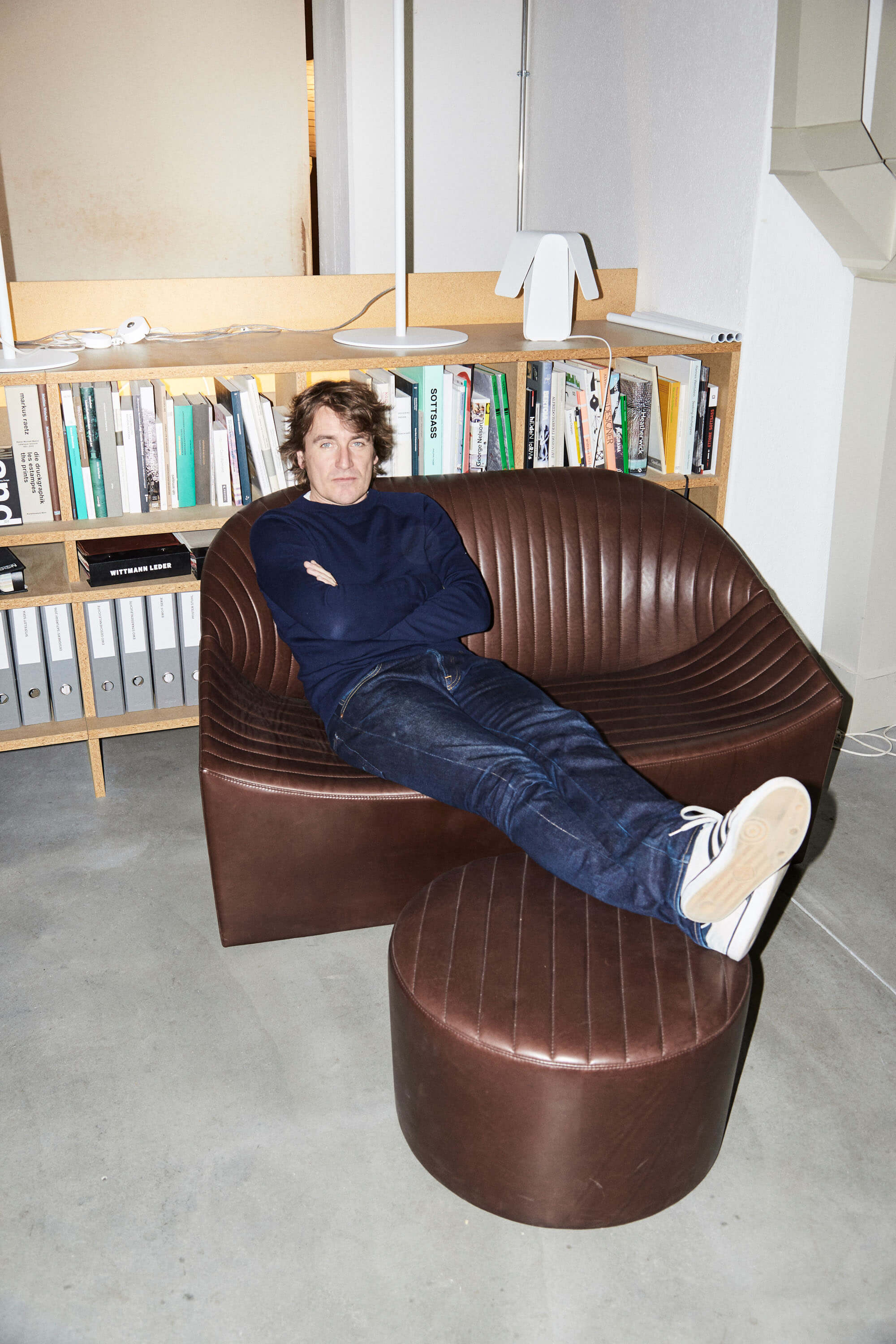Hot Wire Extensions
Divine order, perfect completion.
For the Baroque church of St. Martin in Trun, Fabio Hendry designed six chandeliers that stand nearly three metres tall. Merging contemporary design with sacred space, the works respond to the ornate interior not through historical reference, but with a distinct, material-led presence.
Each chandelier features seven arms – a symbolic and functional gesture – and is made from a mix of marble sand and recycled nylon powder, a waste material from industrial 3D printing. Fused together using embedded heating wires, the process was developed by Hendry himself: tool-free, waste-free, and driven by a commitment to sustainable making.
The project is emblematic of Hendry’s wider practice, which moves between craft, research, and industry to rethink how things are made – and what they’re made from. Installed in the church, the chandeliers become more than lights: they reactivate the space as a site for contemporary design and shared cultural meaning.
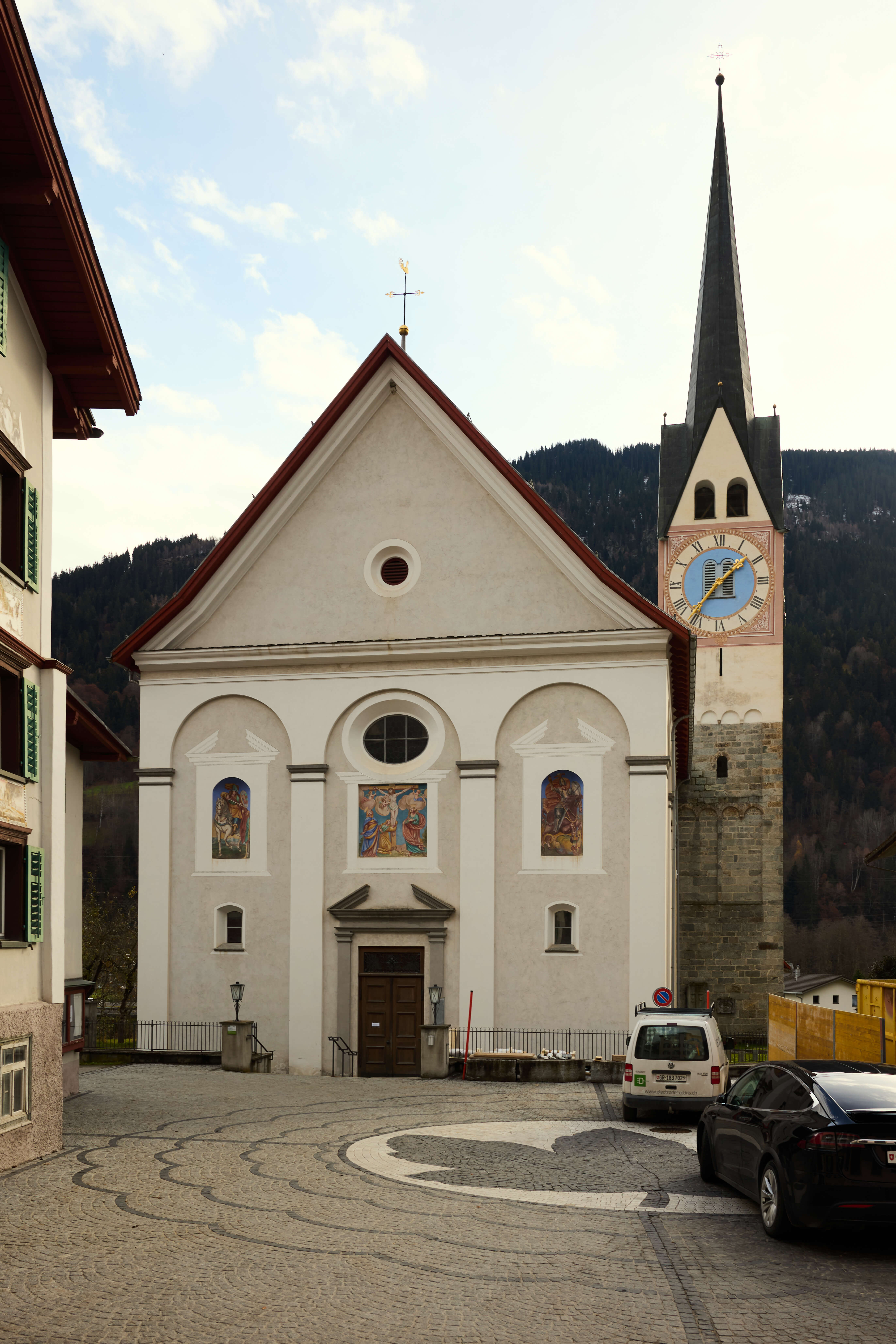
What drew you to this project at St. Martin Church? Did the Baroque history of the space spark any specific ideas or feelings for you?
The Baroque period isn’t known to be shy, it’s a style that is full of drama, flair, and a lot of chubby angels. I was intrigued by how light was originally used in churches where natural light and candles traditionally did all the work. Today, the lighting that is added is often glassy and anonymous, floating awkwardly in these theatrical spaces. I wanted to do the opposite, to create something unapologetically present, with weight and tactility. Something that could hold its own next to a frescoed cherub and the ornate interior.
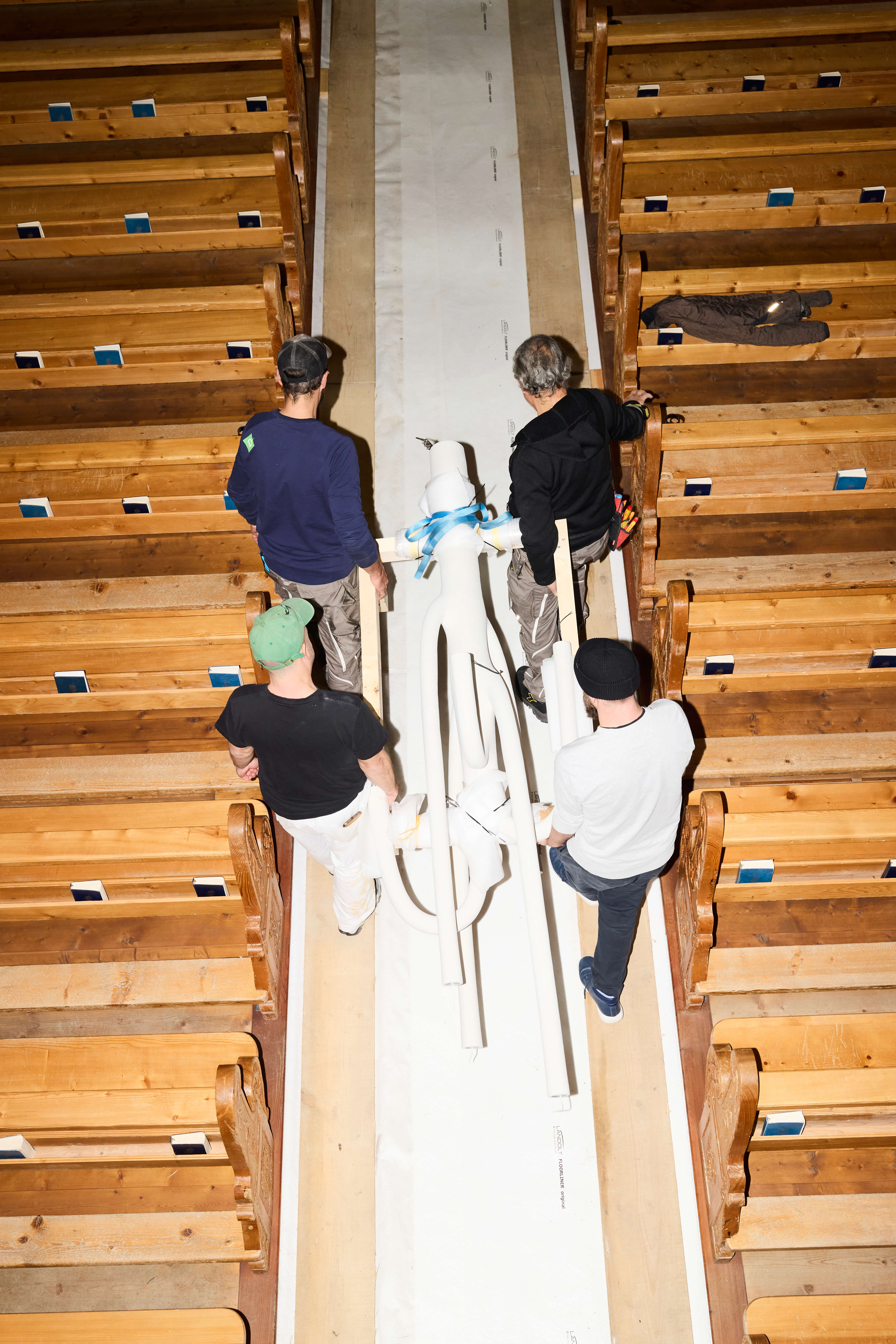
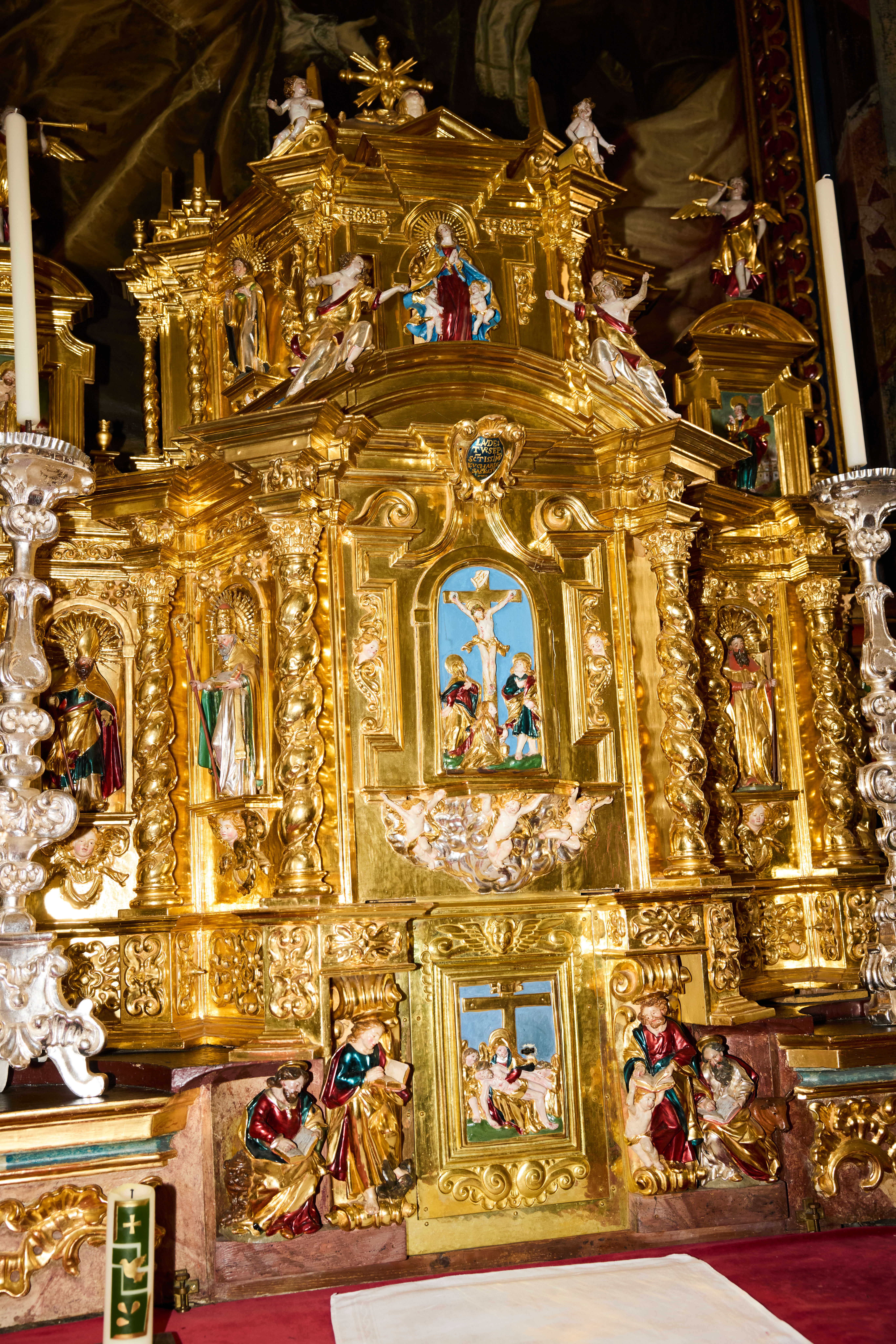
Your studio usually works with local sand, but for this project, you used marble sand. What led to that decision? Did it feel like stepping into a different era of craft?
Using marble sand felt like a small architectural wink. Marble has such deep roots in religious architecture, where its purity is meant to emphasise the symbolic value of sculptures, and its colour and structure can be seen as a spiritual conductor. Because of our manufacturing technique, what we used wasn’t pure marble, it’s mixed with nylon powder, a waste material from SLS 3D printing. So it has this odd, hybrid quality, like a marble trompe-l’œil. That play with authenticity mirrors the Baroque space itself, where you’ll often find materials pretending to be something they’re not. It’s faux-real.
The light objects have seven arms, a number rich in Biblical meaning. How did you weave that symbolism into your design?
It was part symbolism, part engineering, part divine intervention. Seven is referenced throughout the Bible and scripture, completion, perfection, rest after creation. But also, from a lighting perspective, it made sense. The number of arms helped us balance the technical requirements of illuminating the space from both above and below, light from heaven, light from the earth. Once the idea of seven settled in, it started to feel inevitable.
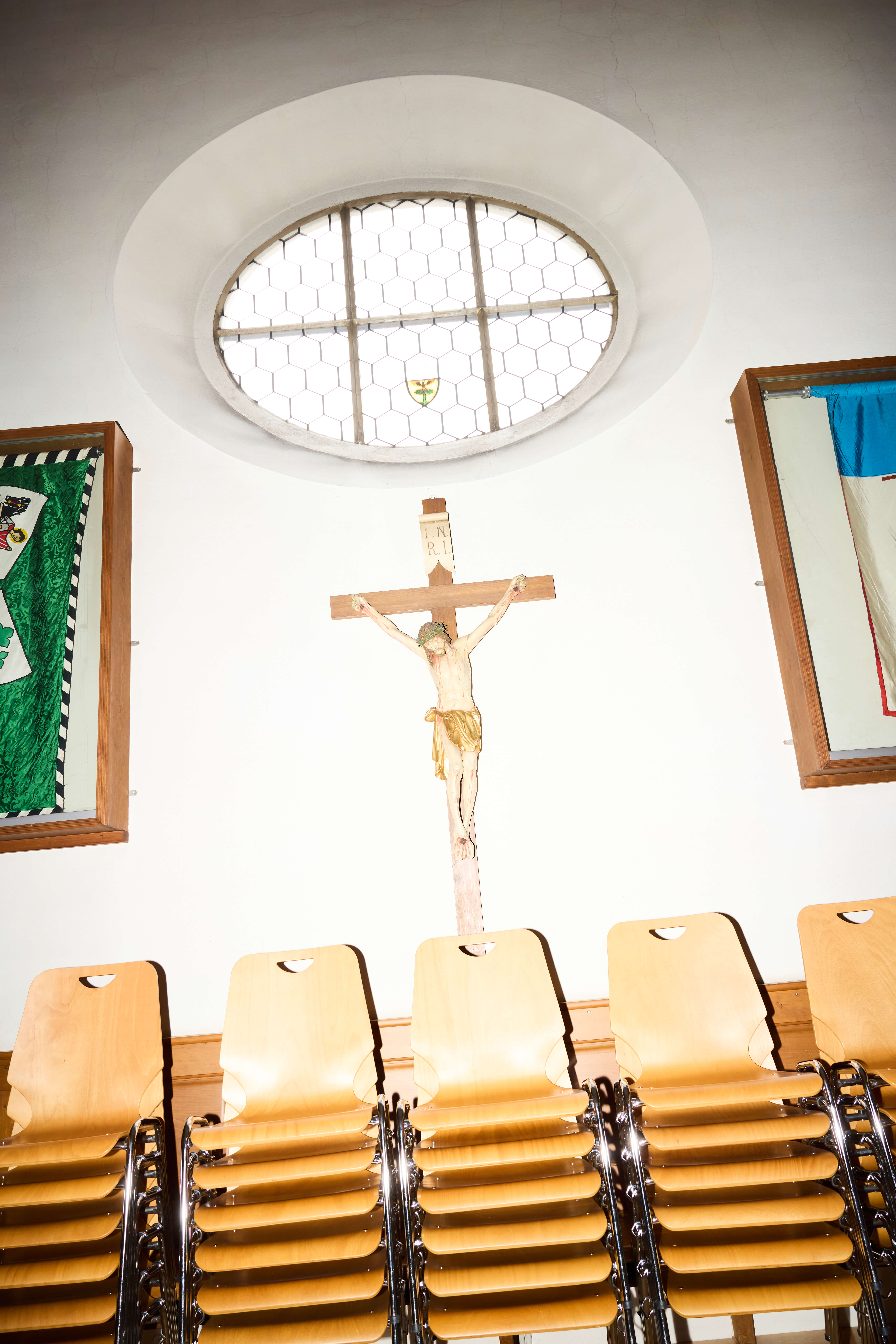
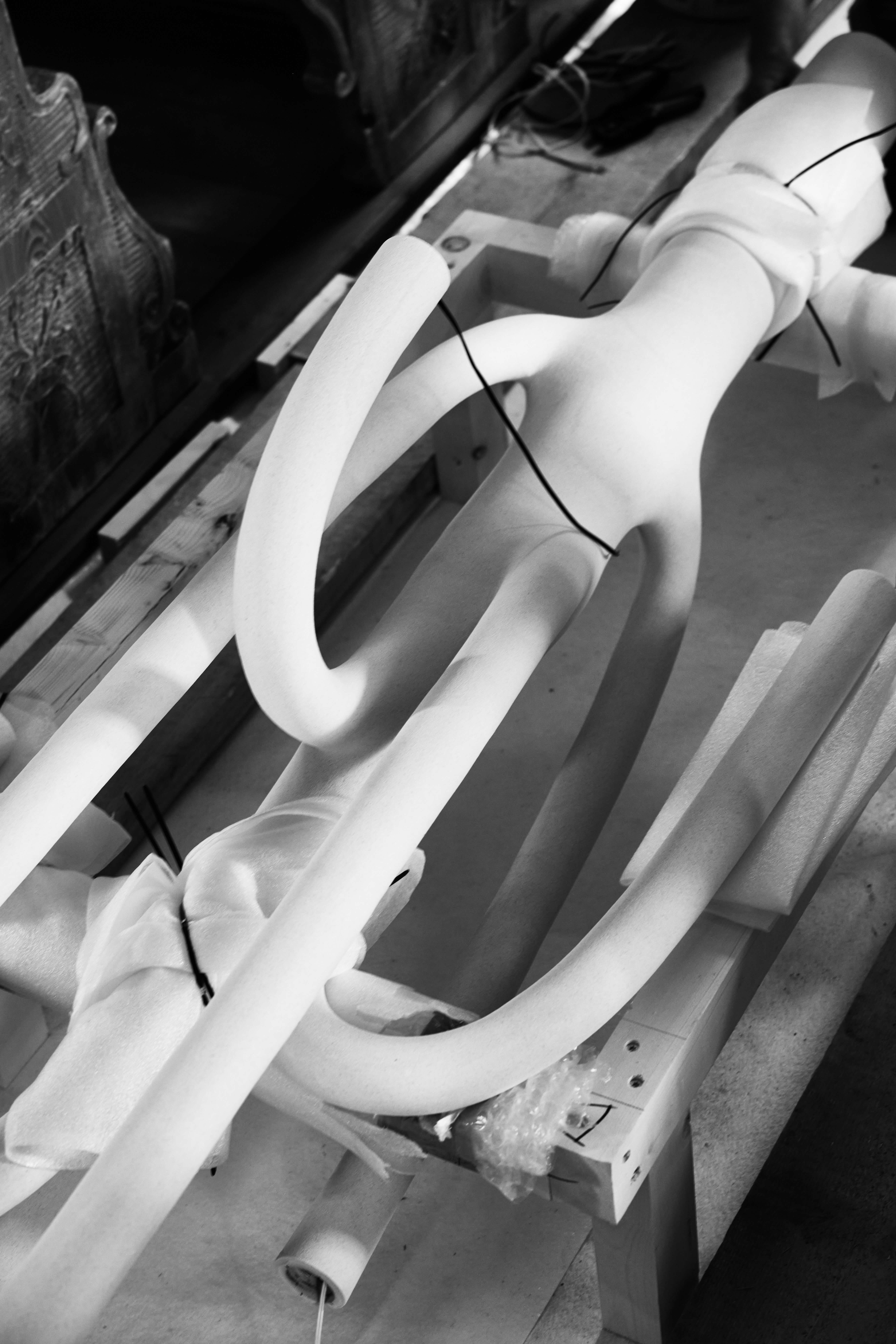

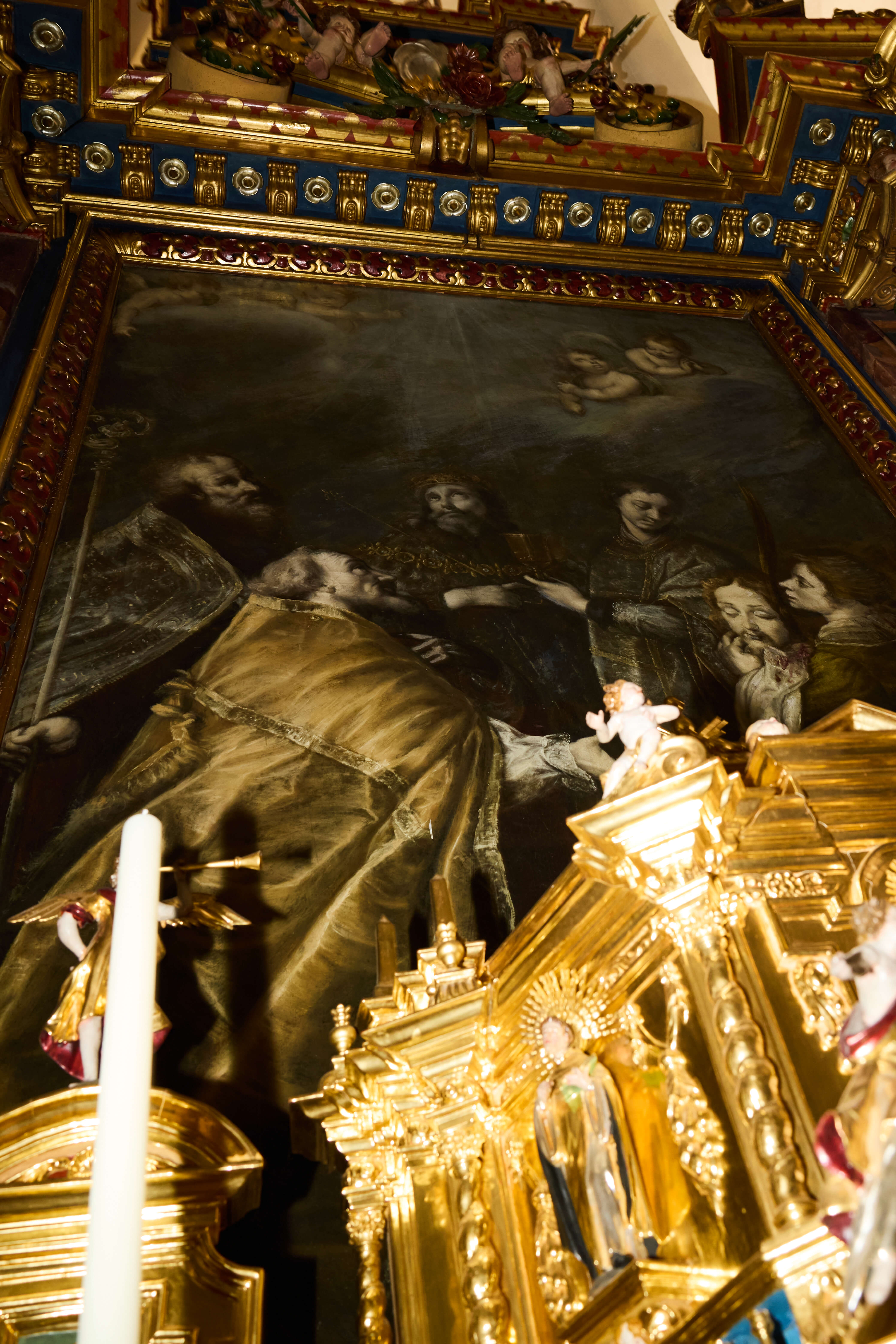
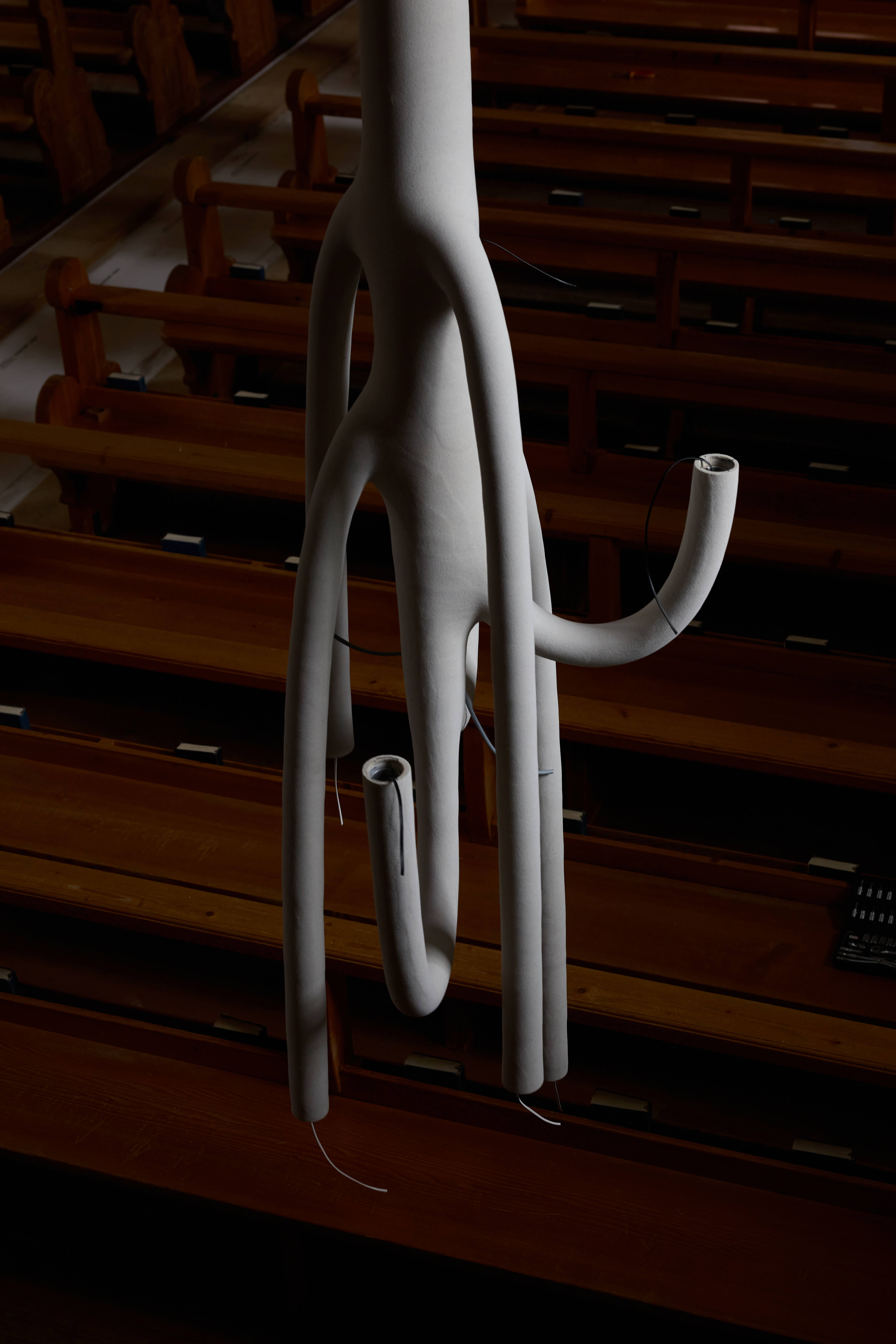
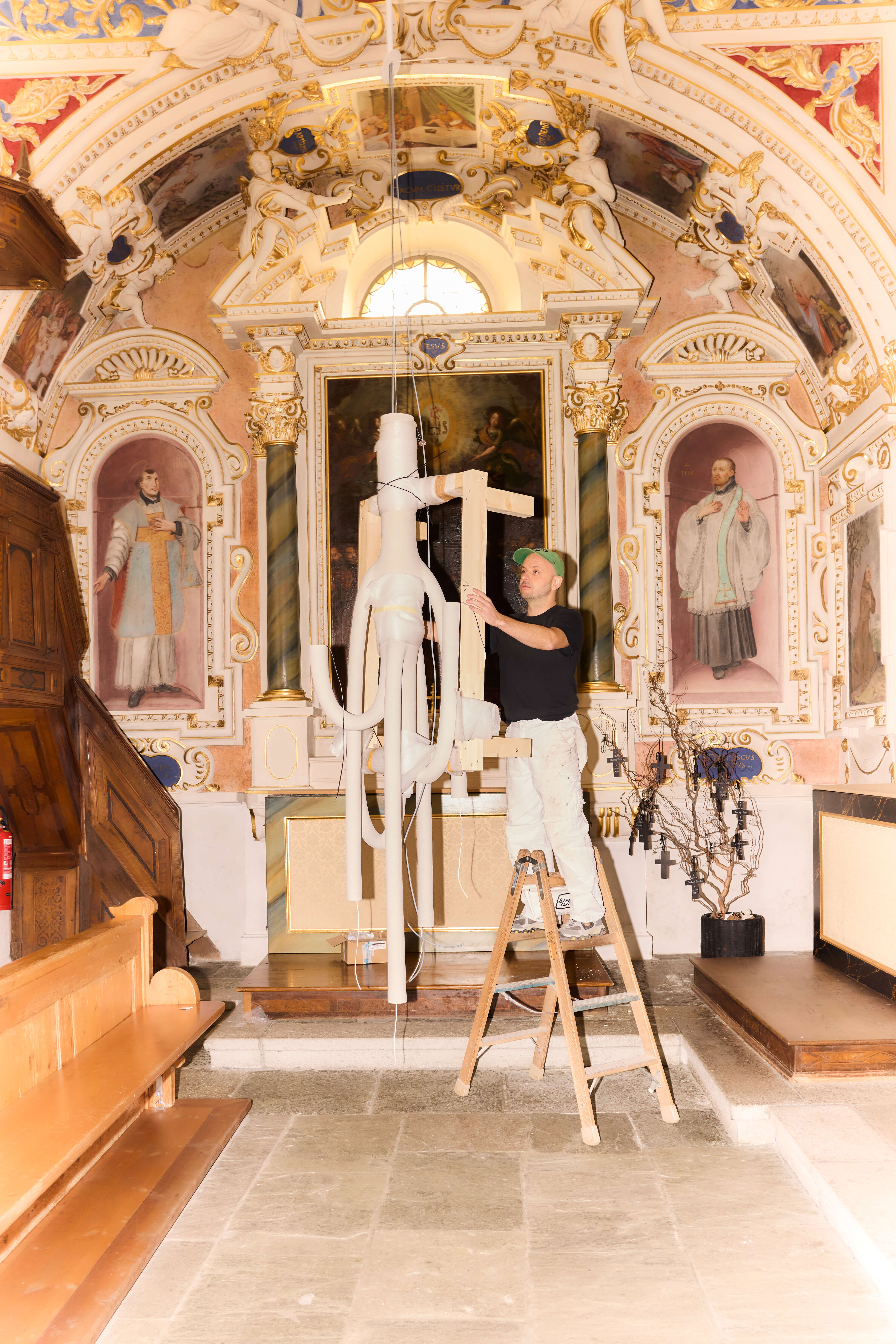
And the process just so happens to speak fluent Baroque.
The lights have flowing, organic forms that contrast with Baroque structure. How did you find the balance between tradition and innovation?
At first glance, the forms might seem a bit alien, like someone dropped a soft sculpture into a church, but once the lights are on, they melt into the space. Literally and metaphorically. The shapes are derived from intersecting U-forms, simple but elegant. The design speaks the language of the process. And the process just so happens to speak fluent Baroque.
Can you walk us through the process of making and installing the lights? Any surprises?
There were several surprises. The chandeliers were made using our unique manufacturing technique of embedding nichrome wire into a mix of marble sand and waste nylon powder, then heating it until everything fuses into a solid form. To electrify the object, the nichrome is pulled through a copper tube, which also serves as an initial frame and technical channel.
Creating a new typology always brings unexpected challenges. In this case, physics gave us two, gravity, and the fact that heat rises. Because of the chandelier’s height, nearly three meters, the material sagged during heating. We had to anticipate around 20 percent deformation and essentially pre-distort the copper skeleton so that it would end up in the right shape after baking. The second challenge was that since heat rises, the heat generated by the wire would escape upwards through the copper pipes. As a result, we couldn’t get an even bake, which meant adjusting the heating process and rethinking how we could get consistent results across the form.
Also, coordinating with a partner company to develop custom lighting components and then fitting everything into a public, sacred space added another layer of complexity. The end result is a balancing act between material behaviour, design intent, and architectural constraint.
So yes, it was complicated, but then again, we weren’t expecting enlightenment to come easy.
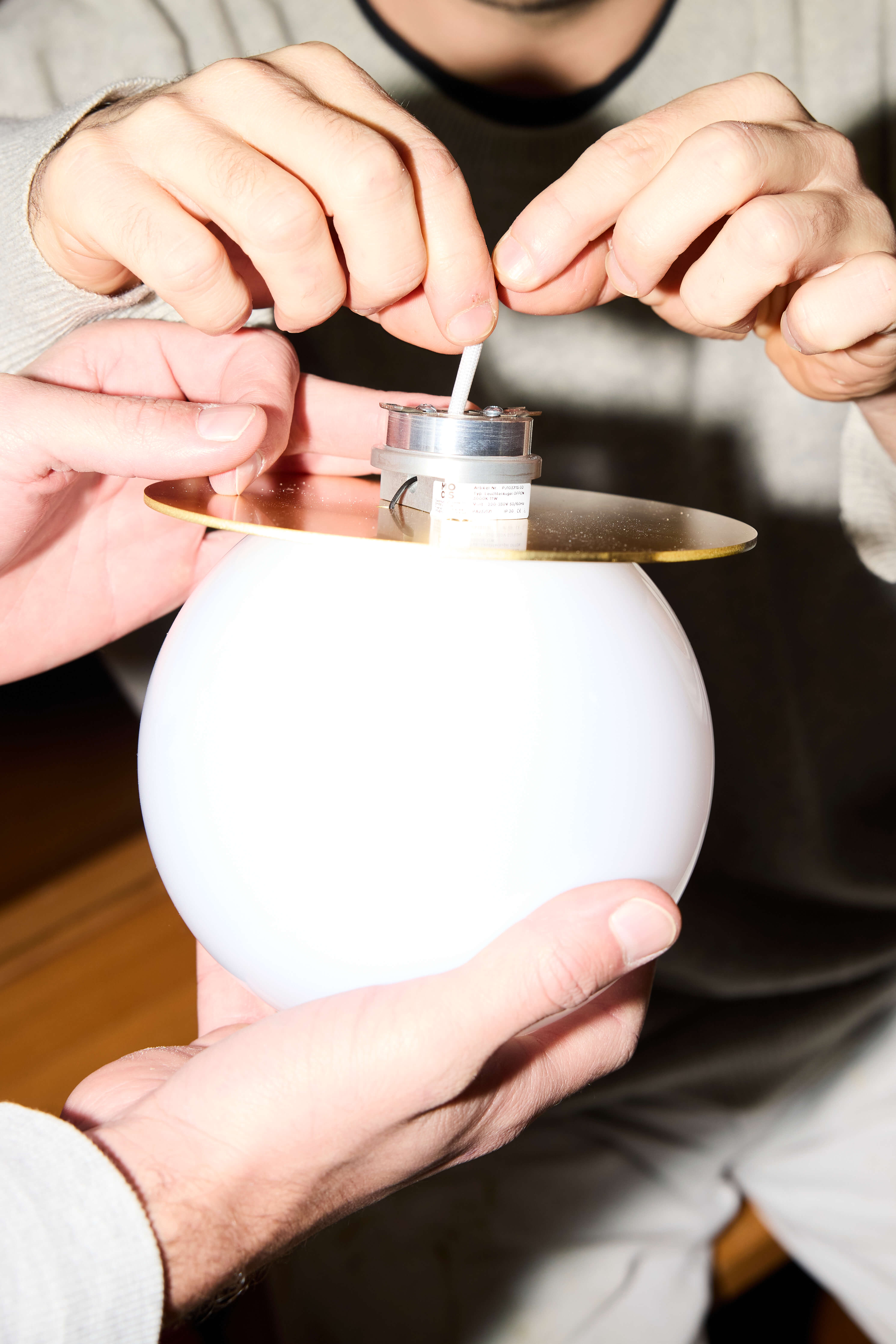
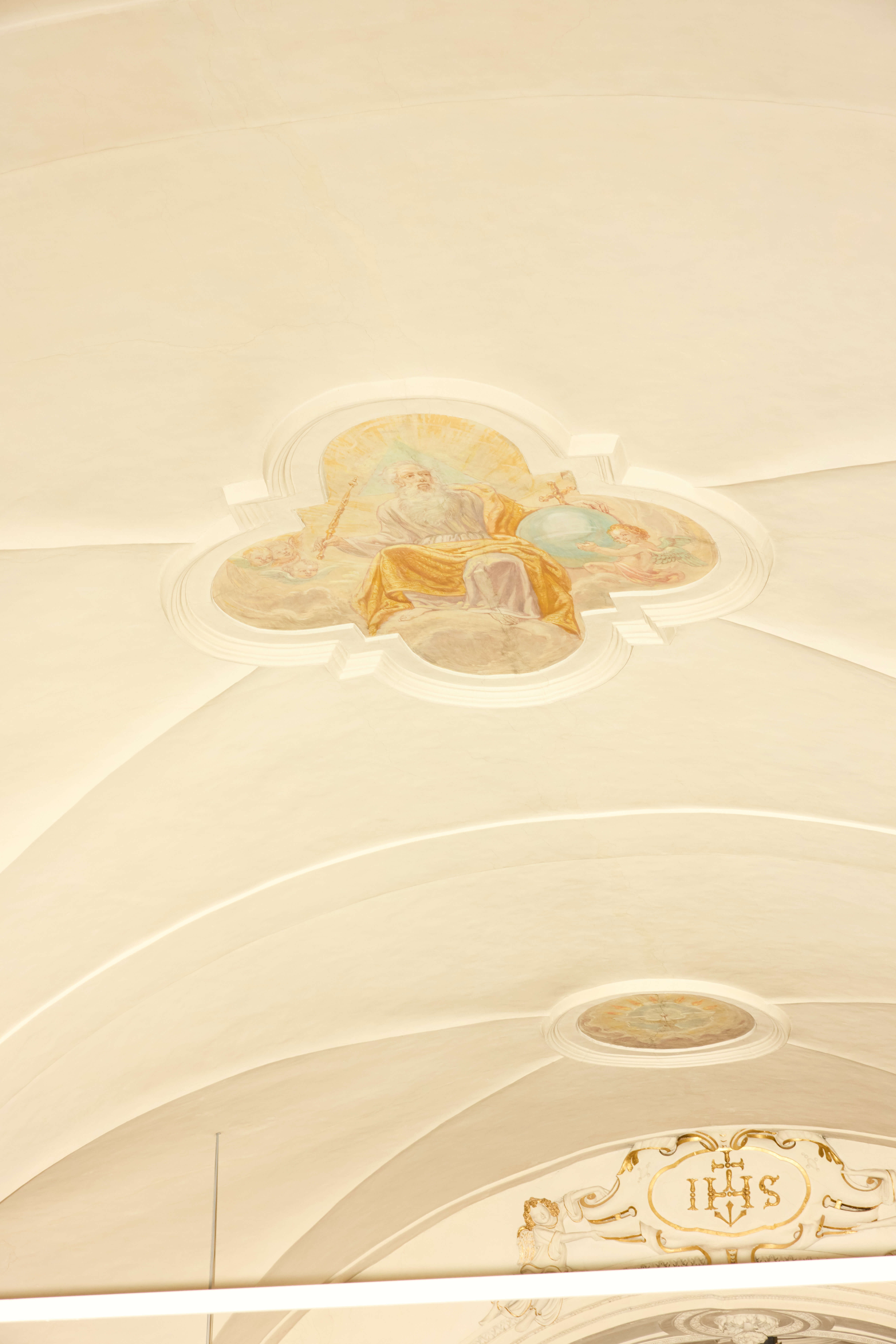
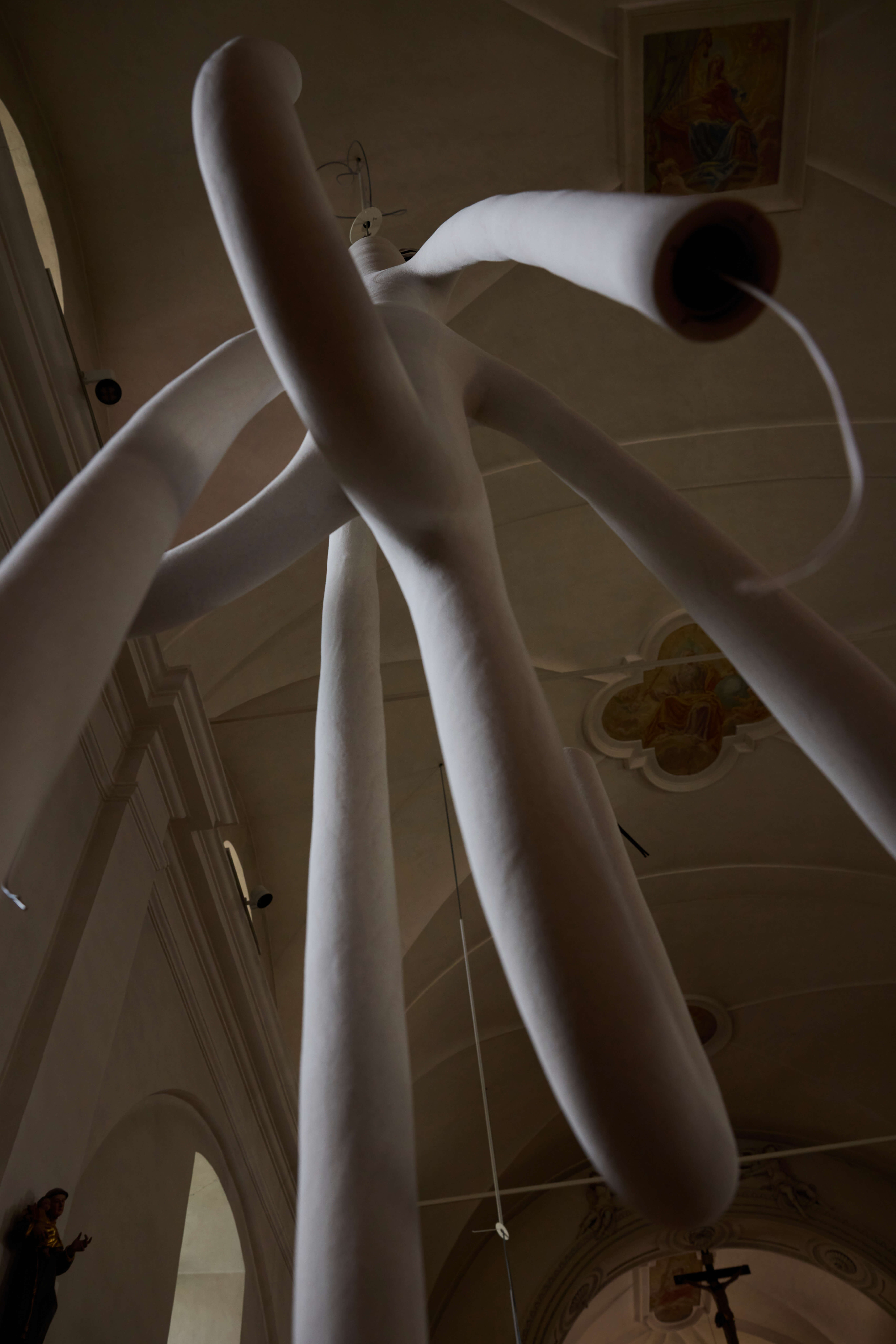


How closely did you work with the priest and the parish community?
Let’s just say, design diplomacy was essential. When the initial line sketches were accidentally leaked to the wider church committee, it triggered a small panic, some members couldn’t sleep. But the priest, to his credit, saw something in the work before it existed. He acted as a sort of quiet champion, absorbing the skepticism until the moment the lights were installed. Once they were in place, the tone shifted and seeing them lit changed everything.
What was it like unveiling the lights to the parish?
There wasn’t a big reveal, no curtain drop, but we introduced the lights during a Sunday mass. In smaller communities, especially in the Alps, church is one of the last collective spaces. The unveiling wasn’t just about the chandeliers, it was about how they could mark a moment of cultural relevance in a shrinking community. Some people saw it as a provocation, others as a gift. Either way, it made people feel something, which is more than you can ask for.
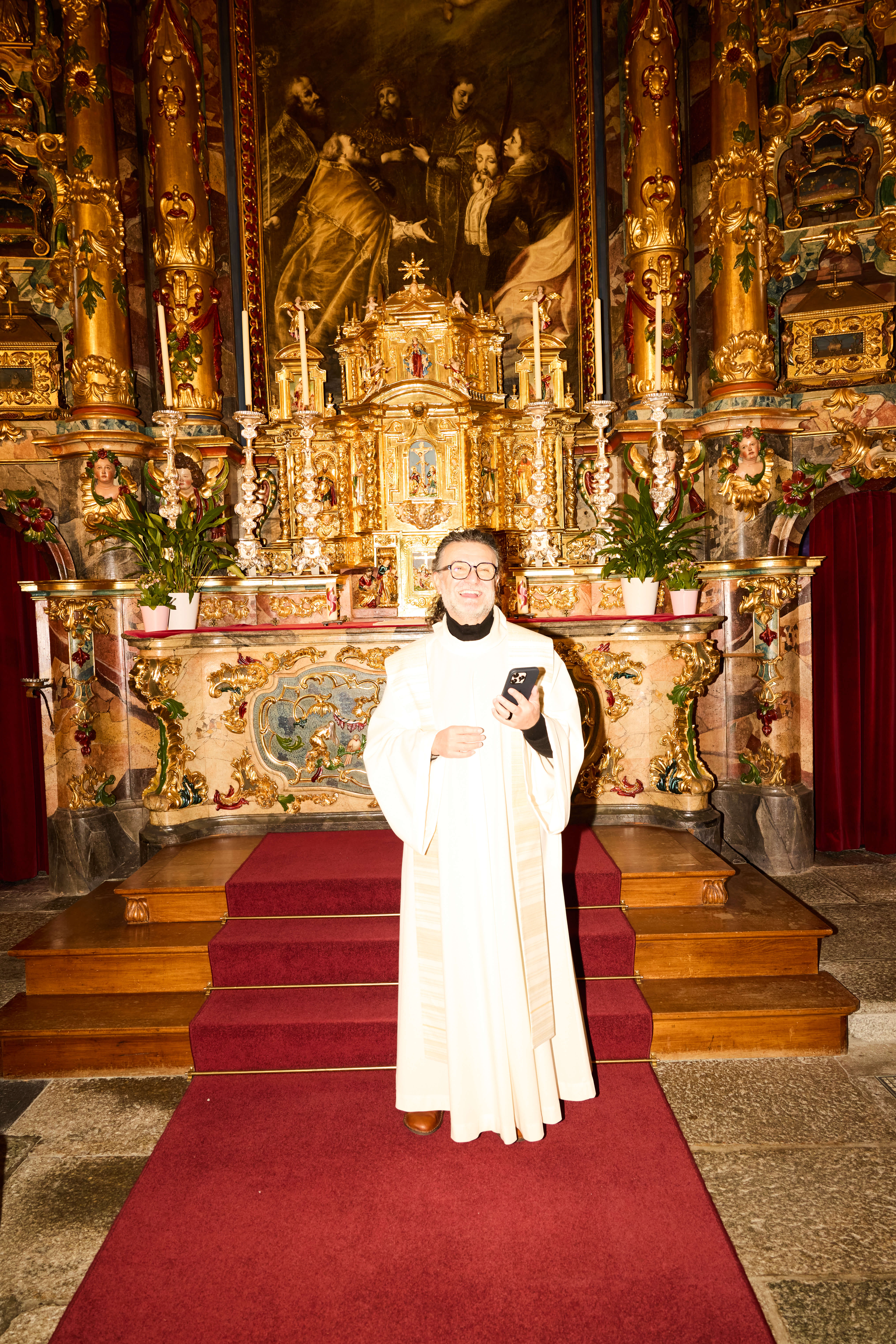
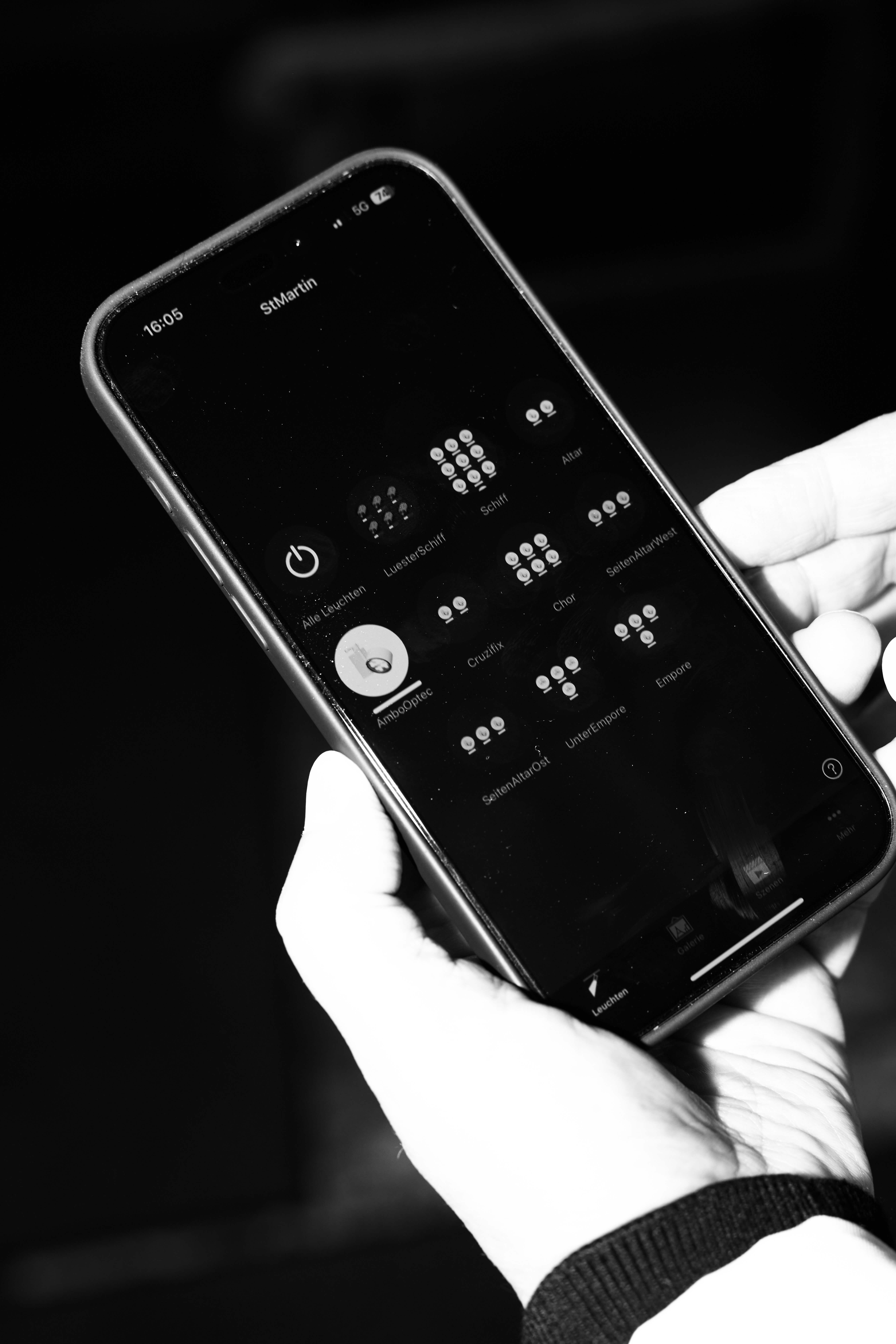
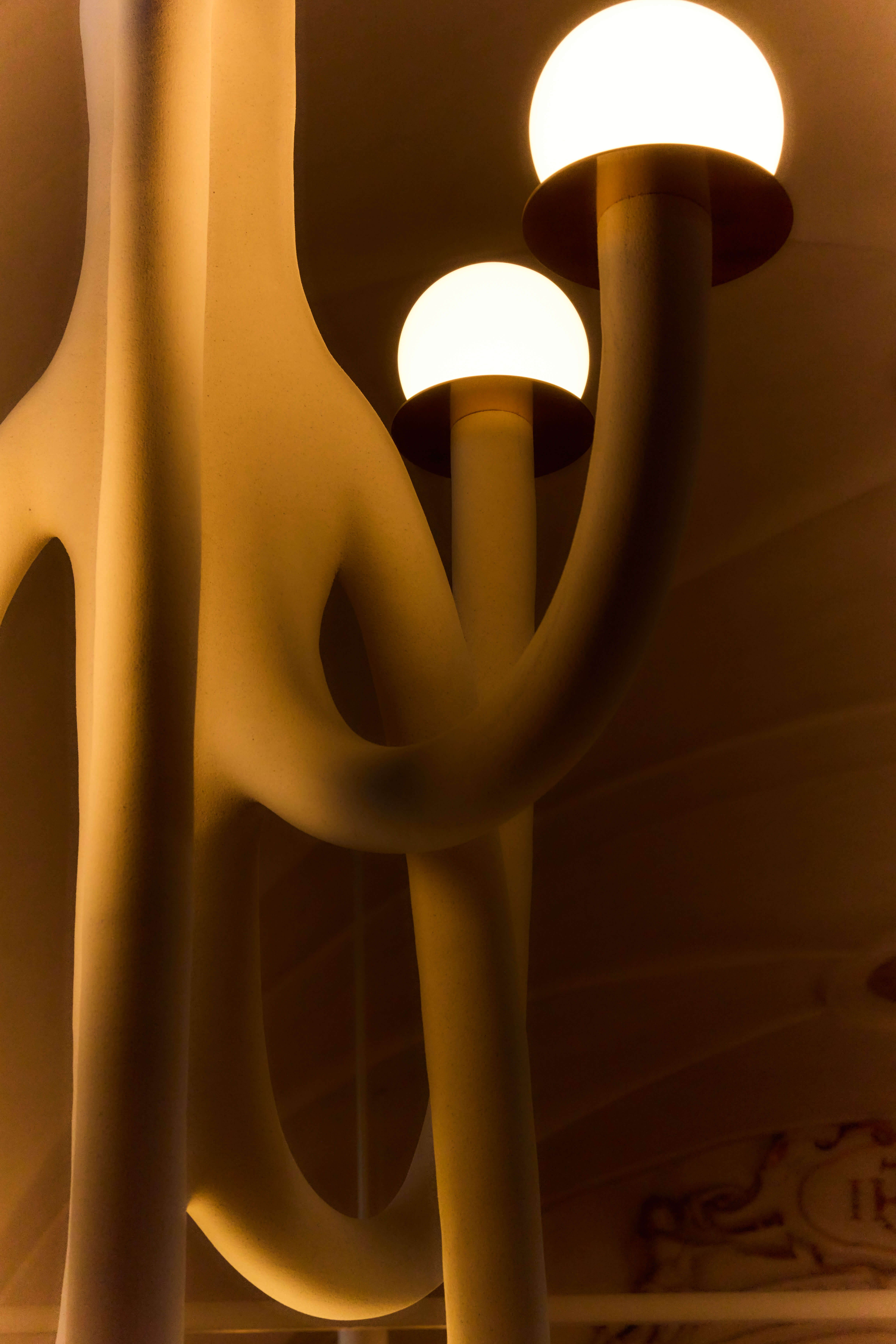
How do you hope people feel when they walk into the church now?
I hope they feel a little lighter, a little more curious. The lights are meant to frame the emotional atmosphere, not dictate it. They will be there during baptisms, funerals, ordinary Tuesdays, quietly shaping memory. If they make someone look up and pause for a moment, they’ve done their job.
Churches reflect their times. How does this project speak to today?
Historically, churches commissioned the greatest works of art and architecture, massive, ambitious, risk-taking projects like the paintings in the Sistine Chapel or the details of the Sagrada Familia. Somewhere along the line, that spirit dulled. Now, many churches are being converted into cinemas or supermarkets. I don’t think that’s the only option. What if these spaces became places of cultural relevance again, not through nostalgia, but through contemporary craft and experimentation? And what if people would go to church not only to see ancient art, but also where contemporary design ideas can be experienced. This project can serve as a testing ground to see if design can attract new communities, and if contemporary design can be an opportunity for the church to reinvent itself.
What did this project teach you, not just about design, but about working in a meaningful, historical space?
That designing permanence is humbling.
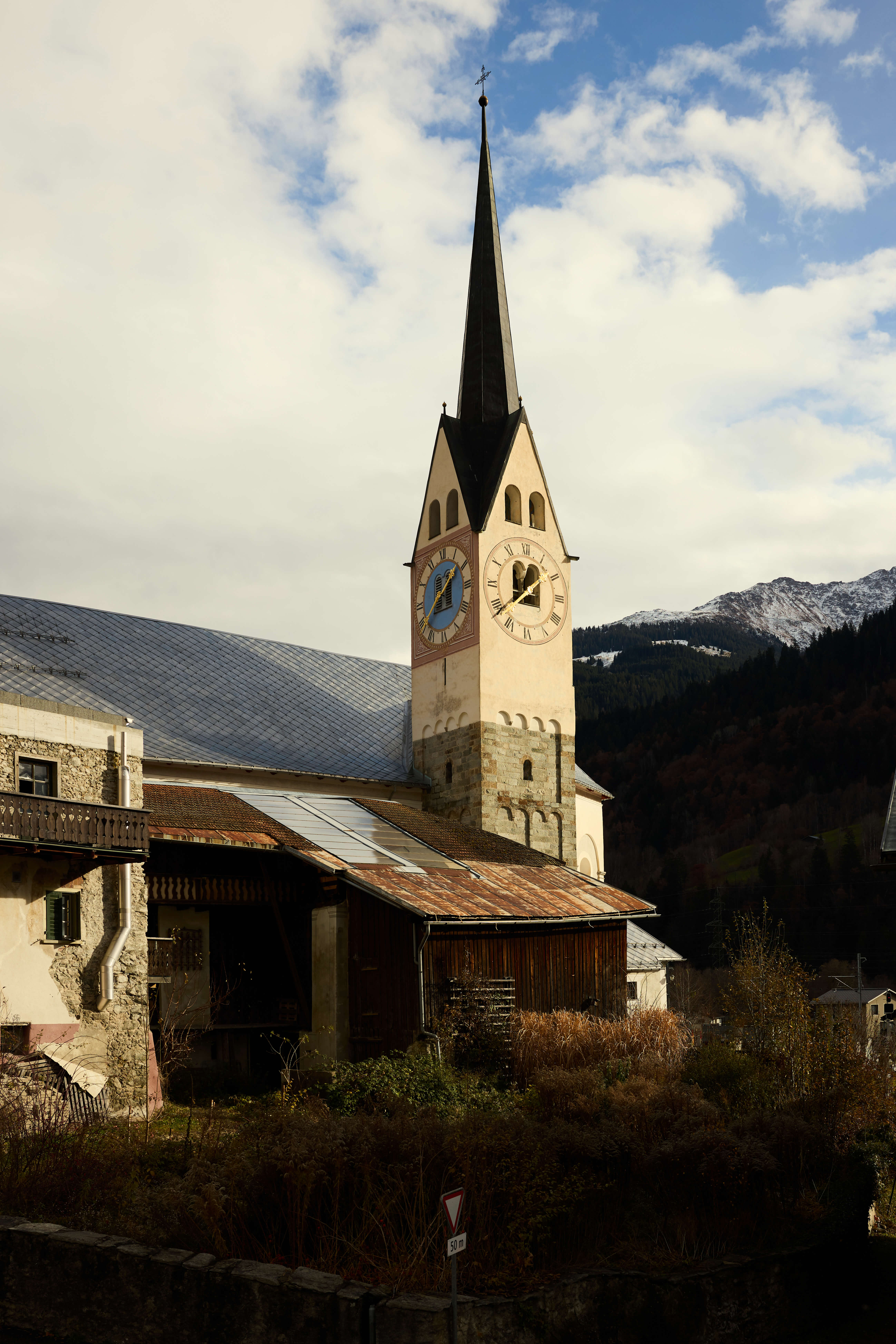
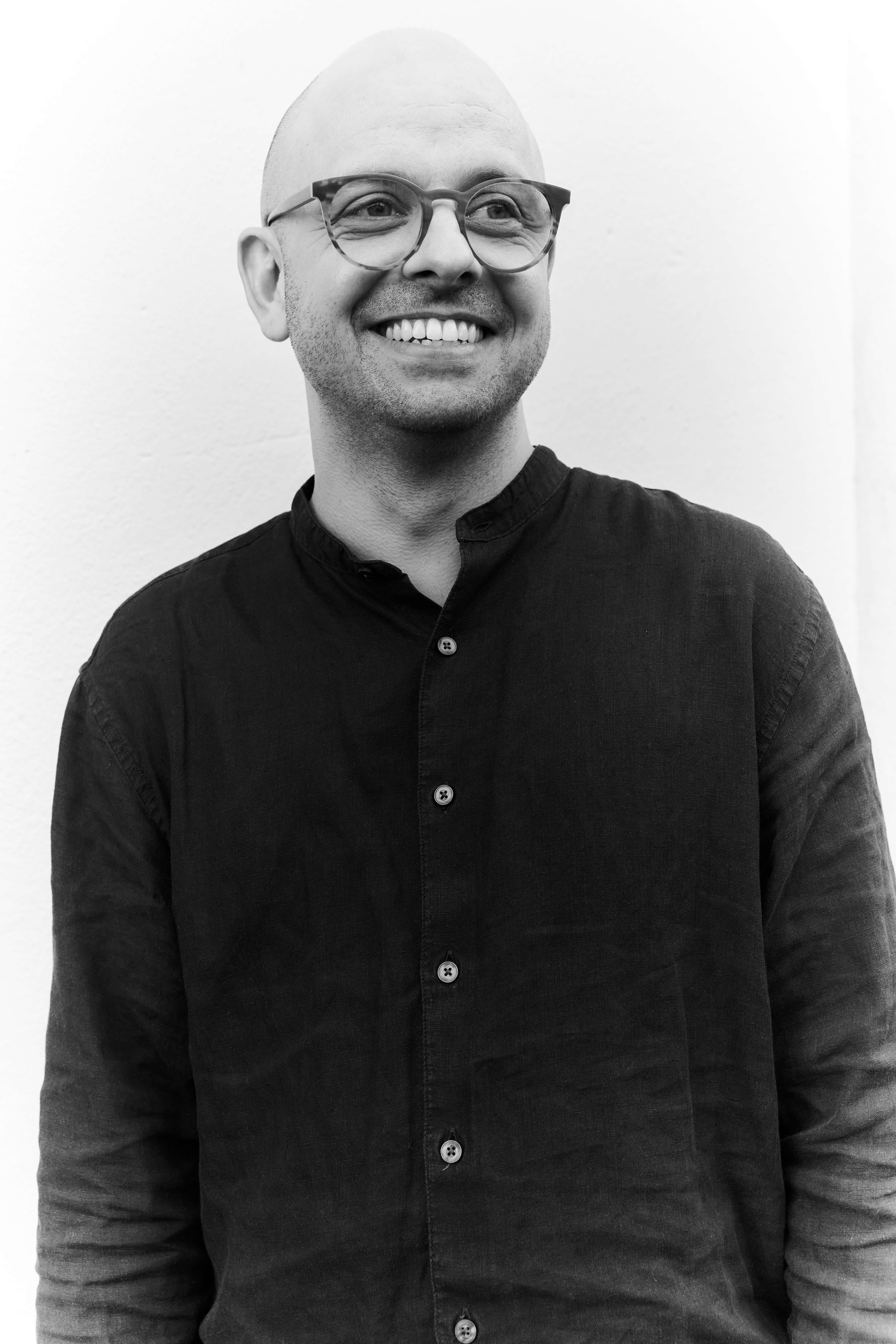
Baroque church of St. Martin in Trun, Chandelier Development and Design: Fabio Hendry, Zürich, Chandelier Production: Hot Wire Extensions, Zürich, Interview by Profiler, Photography by Joan Minder.
Light Calculations: ERCO Lighting AG, Zürich, Project Consultation & Photometric Development of Luminaire Heads: Michael Heusi GmbH, Zürich, Engineering & Production: MOOS licht AG, Luzern, Electrical Installations: Electro Decurtins SA, Trun

